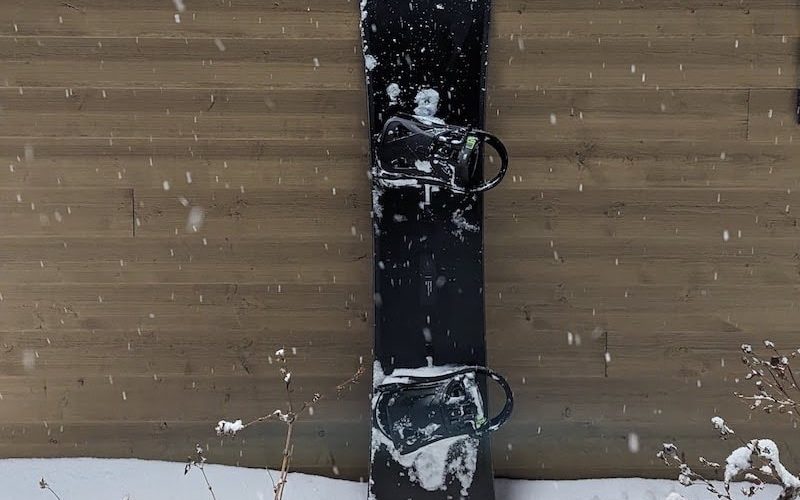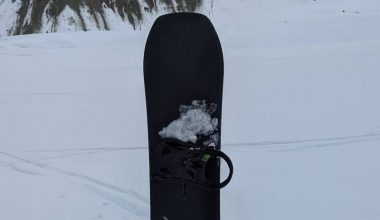Oh my god this board! And I thought that my Burton Custom would’ve been my forever one board quiver, Burton Hometown Hero showed up.
Alright, there’s much to discuss about this board so let’s just get on it! Remember that when I write, I’m not here to throw the same snowboard terminology to you but rather for me to explain and simplify it for you 😀
Summary
You want a quick summary? I like it. Period. I like it a lot that if I can, I’d make this my daily driver. I still use my Burton Custom and that’ll still be my daily driver especially for smaller hills but when it comes to medium – big mountains, I bring the Hometown Hero; whether that’s Tremblant or Chamonix.
There are a couple of features about it that may not be for everyone. I wouldn’t say they are “bugs” or problems. There’s really an ideal rider, terrain, and conditions for this board so if you’re not about it or close to it, then you’re just using the wrong tool for the job and you’ll be frustrated.
My set up
Board: Burton Hometown Hero
Bindings: Burton Step Ons
Boots: Burton Rulers (Step Ons)
Experience comparison: Mostly comparing it to my previous daily driver, Burton Custom
Riding style: Never the point-it-and-gun-it guy but I definitely like different terrains and difficulties. I treat the entire mountain as my freestyle land. Looking for a board more pow-suiting. I like side hits 🙂
Function
Stiffness / Flex
Before I owned one and when I demo’d one in my local mountain, this was the very first characteristic I noticed. It was stiff! Well, compared to my Burton Custom that I’ve been wearing down for a while.
Relative to my use and experience I would say Hometown hero is an 8/10 and then Burton Custom became a 6-7. It’s weird because when I got my Custom first, I thought it was 7-8. As I get used to it it became easier to flex this.
For the flex rating, I’m talking about torsional flex (e.g.: imagine twisting your board like when you wring a wet shirt) and also the flex between your feet (e.g.: that motion you’re thinking of if you were planning to snap a snowboard in two). I was expecting this, given that the purpose of Hometown Hero is freeride-leaning but treating the mountain as freestyle.
Halfway through my first run with the demo board, it was easy to “ride it like a custom”. I eventually was able to pedal my feet and do micro pops/ollies. I’d say you just need to do +10/15% effort more? Which is good. Before I tried it I thought I’d have to do +50% effort on everything.
When it comes to the flex of the tail, it is shorter and feels stiffer than the nose. Since it’s also shorter, I feel like it’s easier to put it under you but it’s definitely springy-er. It’ll want you to pop soon, which is good and a big reason why I was strongly considering this board.
The nose is the opposite wherein it’s longer in comparison to the tail. I find it easier to press on mostly because you have more surface to work with.
The Burton site says it’s twin flex but with my experience it feels like directional flex to me. ¯\_(ツ)_/¯
Taper
This is where HTH wins over Custom: it has a 12mm taper which I really like. What does this mean? The nose of Hometown Hero is 12mm wider compared to the tail. So when you’re riding pow, it allows you to float on top of the snow easier (it’s a good tactic instead of making your board longer for float, which you can do).
I really like it and I was looking for this while I was shopping around. The taper gives you more float while maintaining board length. I don’t want my board to be any longer. First it adds to swing weight but with my riding style, I like tight places like trees as well.
Again, my intention for this board is for mountains where there are off-piste options. If I know I’m just going to be purely resort riding and/or just park lapping, I’m definitely swapping to my Custom.
My experience
How does the taper affect when my resort riding or if it is hard packed snow? With my experience it’s excellent with traction and turns, it hits a ceiling though if your goal is just deep carves and holding it in for long arcs. To clarify, when you’re making gripped turns, tight spaces, glades, and anything that requires precision and grip, this excels in it. Chef’s kiss. However you’re in a wide-open 20-30 meter wide, freshly-groomed corduroy blue trail and no one’s around you and you want to dig that trench, hold that carve going from side to side of the entire width, you might have difficulty. I think that’s the inherent drawback off taper.
What happened to me is you’ll be able to engage that but there’s a high chance your back foot’s going to wash out. You can eventually manage it. At first I thought maybe it’s possible to do carved turns with this and I’m just not doing it right. I tried many times and maybe 7/10 times I’d be able to pull it off. I can’t hold it for as long or for specific arcs I’d want to do though.
It varies by terrain and snow quality too. If it’s softened snow, I can definitely and easily engage and hold a carved turn. If it’s cold and dry ice coast ice, good luck.
Bend
This board is directional camber. Also the ref stance is set back already. That means that the ref stance and the structure of the board is set back already. If you take a measuring tape and measure the ref stance of the back and front foot, you’ll see that the ref stance of the back foot is closer to the tail vs the ref stance of the front foot to the nose.
“How this any different than setting back the bindings of a twin flex board?!“
Well, you’re almost there however in directional boards (in general too btw) the construction inside itself is shifted back that’s why the ref stance follows it and is pulled back already. If you measure the contact points (the four points of your edges that first touch the snow) too, you’ll notice that the rear contact points are closer to the tail vs the distance of the front contact points and the nose.
Your ref stance is trying to centre you in between the contact points, not the full length of the board.
Sidecut
“what is sidecut radius again?”
Mmm, oversimplified the higher the number, the more you can do loooong, deep carves and turns. In contrast, the lower the number, then the more you can do, nimble, tight, and short turns. It’s measured in metres. I’ll explain and illustrate this next time.
I find that the Hometown Hero turns faster, at least in comparison to my previous Custom. Just right now I looked into it and Custom has a 7.8m sidecut radius vs HTH’s 7.4m, which supports the idea. I didn’t know .4 would make a big difference.
So given this characteristic, it definitely proves the value prop of HTH that it’s a board you can bring off-piste but still wiggle around in tight trees or if you do a lot of wiggly riding (I do lol). It becomes useful when you’re in double/black runs and you want to be in control thus have to do quick, tight turns.
Base performance
So for this one, I’m talking about the material and performance of base of the board (the bottom part that gazes through the snow).
HTH has the second-highest base quality/material (WFO) in their spectrum. What does that mean? It’s glide-y and if you point it down, you go zoom zoom fast (How’s that for de-technical-izing snowboard terminologies? haha).
Put it this way, every time I’m on the park I sometimes have to do an extra half-speed check or sometimes start my run a little bit lower than most people. Well to be honest, it’s probably because physics-wise, I have more mass in me LOL. If that’s the case, adding a slippery board definitely makes me go faster than what I’d be used to.
I’ve ridden extruded bases and I’ve ridden dry bases. That’s when you point it down, it’s either sticky or it starts to feel you’re ready to go but the board isn’t….going. This board is not that.
I know that the trade-offs for sintered bases in general (which this is categorized under), is that you have to constantly wax them. If you’re going to be hardcore snowboarding though, this’ll be part of your maintenance routine that it’s not a chore. It’s like “taking a shower” for your board. Yes, if you’re wondering, I’ve written an article already on when to wax your board.
Design
Looks: 10/10
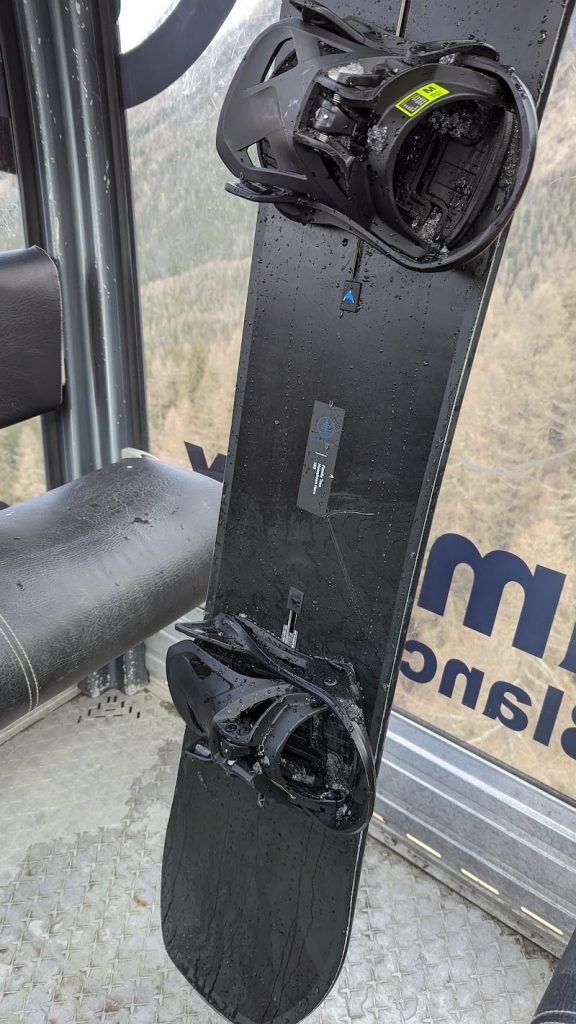


So this is easy. I actually love the design of this year’s HTH (fun fact: this is exactly the same design of the year before it). I got a hold of the 2025 one and I don’t like the new design so it was even more incentive to get this one. Not gonna lie, the one I really wanted before was the Hometown Hero but the Natural Selection Tour limited edition. But then when I looked at the specs, it sounded softer so I fell more for this standard design.
The design is easy, simple, minimalistic: all the design aspects I want. It’s almost all-black (but marble-looking) and then just solid-freakin-blue underneath, ugh 👌🤤.
That said, there are a couple of details about it that I wish it could’ve been better. These are minor inconveniences and not like I’m going to abandon the board.
Things that can be improved
Not-so-scratch resistant
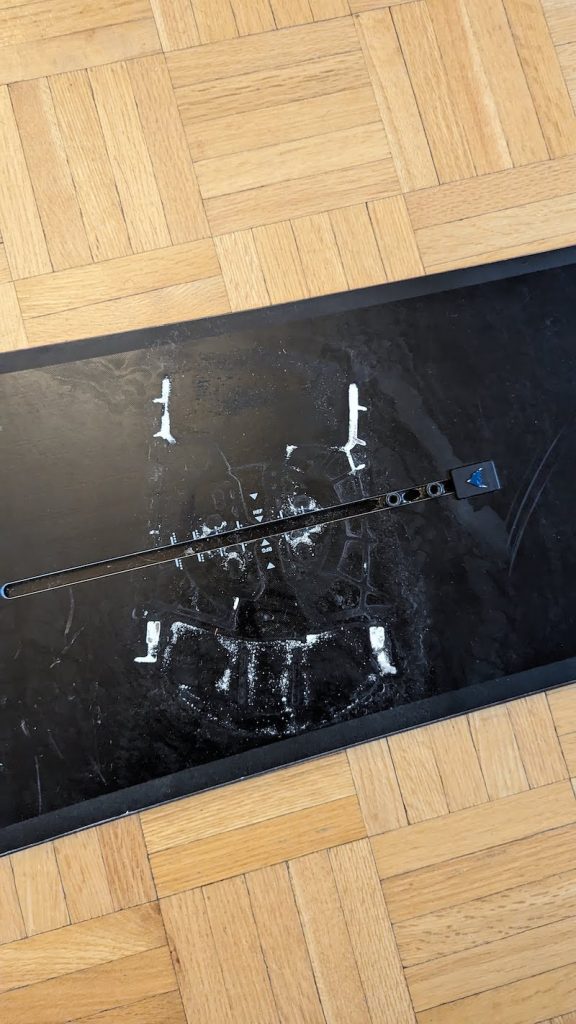
First, I rode it hard for the first three times and I noticed that the top sheet design disintegrates easily. Maybe this contributes to it but the surface is just matte, and not covered/protected by clear coat. I actually like and prefer that, but again no defence.
I noticed that the edges of the topsheet get rubbed off easily with the smallest action. You know when you’re in line at the lift and then a skier accidentally bumps and runs over your board? I’m not talking about an intentional, deep carve on your board but rather a harmless, totally not intentional, very light, and the skier just slipped 5cm more and their tip just grazed your top sheet. Yea, that’s enough to scratch the design.
With my previous boards, if another ski/board runs over yours, it’ll definitely leave a gash, but the design/paint will still be there. This one, no. It looks like the paint was chipped in the process.
It’s exacerbated by the next point too.
White base underneath the top sheet?

I’ve scratched and peeled off the topsheet already (think when you’re removing your bindings) and it seems like what’s happening is that the underlayer of this topsheet is like a white, plain paper look. So when you do the smallest scratches and you peel off the cool matte-black design, it exposes this white, paper-looking underlayer. Scratches are usually fine since they’re hairline scratches and it’s easy to not notice it until you look closely.
But since the topsheet design (I feel) peels off easily AND it is a white-on-black damage, it’s so obvious and just very noticeable! I don’t care about what other people think, but I just feel like I bought a Porsche and then the paint peels easy sometimes lol.
To be fair, maybe it’s by design and is intentional. Without the clear protective coating, it’s lighter, maneuverable, and it allows the matte look. So if that’s the case, I definitely welcome it wholeheartedly.
Me using it in Chamonix
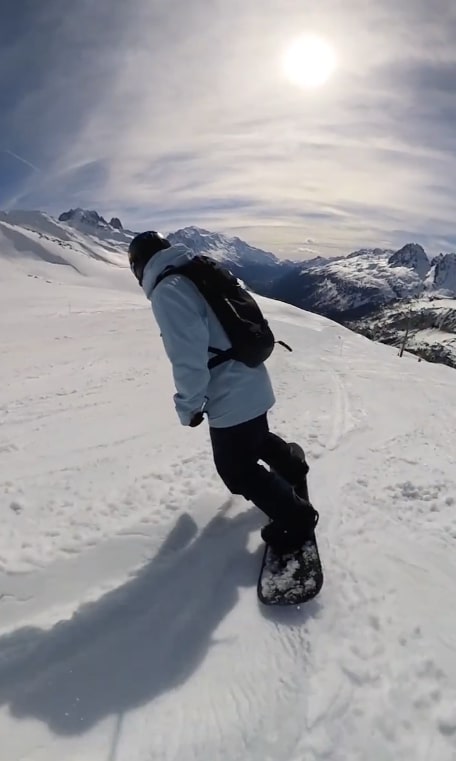
Feel
This category is about my experience(s) with it that aren’t technicality under functionality and design.
Float-ability on pow
I discussed this in a more specific article. I am really surprised and impressed with how the board performs on pow. It has definitely done what it said it would do in their marketing. I was looking for a board that I can ride off-piste. And when I do, I would like my board to easily float on pow so I don’t have to burn my back leg offsetting my weight back. At the same time, I don’t want the board any longer.
This board just delivered exactly all those and more! It’s still 156 (exactly like my custom), with taper, and with set back. I feel confident just centering myself on my board and charging down off-piste runs.
Reference stance for powder
Speaking of, the set back! My mind is blown. I am happy to inform you that they’ve planned this board so much that they’re correct. The reference stance is enough in pow to float.
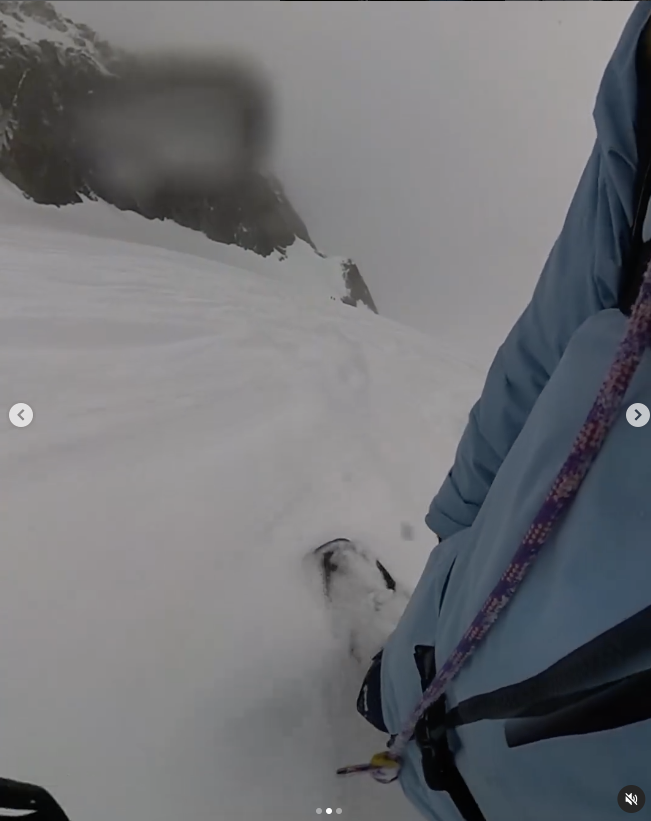
Before I rode Vallée Blanche, I’ve been looking at reviews of people if they had to set back their bindings a notch or two just to float in pow. I’ve seen people say they just set it all the way back to be absolutely sure. I have a friend in my multi-week class and he said he set it back one notch before his Revelstoke trip and that was just enough. Other people said it’s preferential. Helpful huh…
My question is then: did these guys anticipate the set back and maybe they’ve set it back when they didn’t have to?
What I wanted
For me, I don’t want to set it back at all if I don’t have to. I like feeling that I’m in dead centre of my contact points. Vallée Blanche happened and ngl, I just forgot to worry about and adjust my bindings one notch back LOL. I was so afraid of other aspects of that run that I forgot to set it back. I was going to play it safe. Actually, I had a hunch that ref stance is enough but I was gonna do one notch back just to be sure since this is a one-time, paid, backcountry shot.
My experience
I ran with reference stance and I. DID. NOT. FEEL. ANY. PROBLEMS.
My entire ride, I was able to ride centre and balanced (ey, CASI 1). I don’t think you can do the forward-foot-heavy steering much, like how I would do it in an ice surface. Nor that you have to; I didn’t feel the need to do that in my short/long turns.
There were very limited situations that I had to go “back foot heavy”, and I even only had to do it for a couple of seconds for very understandable situations, as you will see.
First I had to do it because there were segments where it went flat light LOL. So I didn’t want to risk and tomahawk it, so I was doing 70-30 in that segment.
The other was, there was this segment where it was crust-on-dust (thin sheet of ice on top of fluffy pow underneath). For the most part, my board was always on top of the surface of the snow. There was this one situation though that it went just a bit under and I was in that place so my nose went under the sheet of ice. My board was naturally trying to come up the snow but it was hitting the bottom part of the sheet of that ice before getting to do so. It was thin, but it was thick enough to not break easily. So when I’m not paying attention the board would try to come up, hit the ice layer, then rebound down since it can’t completely break through. I was safe and still floating though but I can feel that it’s micro-torpedoing me down and if I’m not careful, it’ll completely torpedo me.
So I had to pull my front foot up and shift weight back every time my front needed to break out of that ice sheet. It worked!
Excellent for kickers, sidehits, parks
‘Nuff said. It’s flexible enough that you can initiate ollies with it but not flimsy enough that you don’t get the rebound you need to ollie/pop. I have the most fun with it with kickers, sidehits, and park jumps. It’s more all-mountain so there’s less worry on the varied terrain as you get to / exit the snow park. In addition, there’s this confidence that you know you’ll still enjoy the park! Rails and boxes it’s fun too. I’m not hardcore on them though. I just do 50-50 or boardslide at most lol. If you want soft flex and buttering, this is definitely NOT the board for you.
Wrap Up
I love my new Hometown Hero. On bigger mountains, it’ll def be my daily driver (shh, don’t tell my Custom). If I know I’m going to do an all-park day, I’d probably still use Custom. It’s not that HTH can’t, but rather the Custom is a better tool for that job.
I have full confidence on any terrain, any difficulty, and snow conditions with my HTH. I like the look, how it performs, and all the things I can do with it.
If you’re looking for a board that’s reliable, stable, and 70% freeride focused, 30% freestyle, then this is a board for your consideration.
Don’t be fooled though. It’s primarily freeride (as you’d want/need it to be anyways), but you can treat the entire mountain and act as if it’s an entire freestyle mountain for you if you wanted to!
